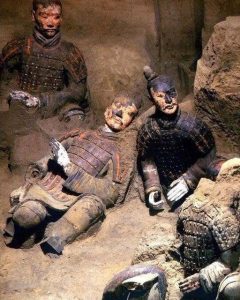Introduction In the annals of ancient Greek history, a chilling relic emerges — the Brazen Bull, also known as the Bronze Bull, Sicilian Bull, or Bull of Phalaris. Conceived in the 6th century BC by Perillus of Athens and commissioned by the tyrant Phalaris of Akragas, this torture device has earned infamy as one of the cruelest inventions of its time.

The Monstrous Mechanism Fashioned from bronze, the Sicilian Bull was a fearsome sight designed to resemble an actual bull, standing around 2 meters tall. Featuring a door on one side, its interior housed a complex system of pipes and a grated platform.
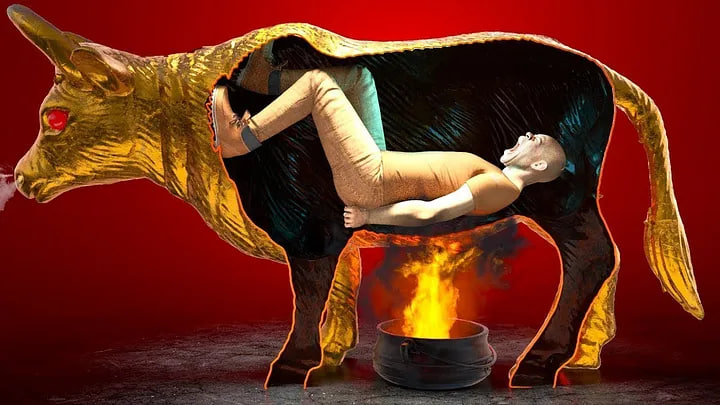
The victim’s fate was a horrifying one. Placed within the bull’s confines, a fire was ignited beneath it. As the flames engulfed the bull, the pipes would heat, and the victim would undergo a gradual and agonizing death — cooked alive within the metallic beast. The bull’s brass horns amplified the victim’s anguished cries, creating a bone-chilling symphony of suffering that reverberated throughout the city. Legends even tell of victims’ charred bones transforming into “jewels” used for macabre jewelry.
Origins and Design:
The Bull of Falaris was allegedly commissioned by Phalaris, the tyrant of Akragas, during the 6th century BCE. Designed by Perillos of Athens, a skilled brass worker, it was intended to inflict unimaginable suffering upon its victims. The bull itself was made entirely of brass, with a hollow interior.
How It Worked:
The victim would be placed inside the bull through a door on its side, after which it would be sealed shut. A fire would then be lit underneath the bull, slowly heating the metal and causing the person trapped within to endure a horrific death. The design of the bull was such that the screams of the victim would be transformed into sounds resembling the bellowing of a bull.
Psychological Impact:
The psychological impact of the Bull of Falaris cannot be understated. Not only did it cause immense physical pain, but the transformation of screams into animalistic sounds added an additional layer of terror. The sight and sound of a person being slowly roasted alive would undoubtedly have a profound effect on those witnessing such a gruesome spectacle.
Symbolism and Infamy:
The Bull of Falaris has come to symbolize the depths of human cruelty and the abuse of power. It serves as a chilling reminder of the capacity for evil that exists within society. The tale of the bull has been immortalized in literature and art, often used as a cautionary tale against tyranny and oppression.
Legacy and Impact:
Although the historical accuracy of the Bull of Falaris remains debated, its legacy as a symbol of torture and suffering endures. It serves as a reminder of the atrocities committed in the name of power and control throughout history. Today, the bull serves as a stark reminder of the importance of human rights and the need to guard against the reemergence of such brutal practices.
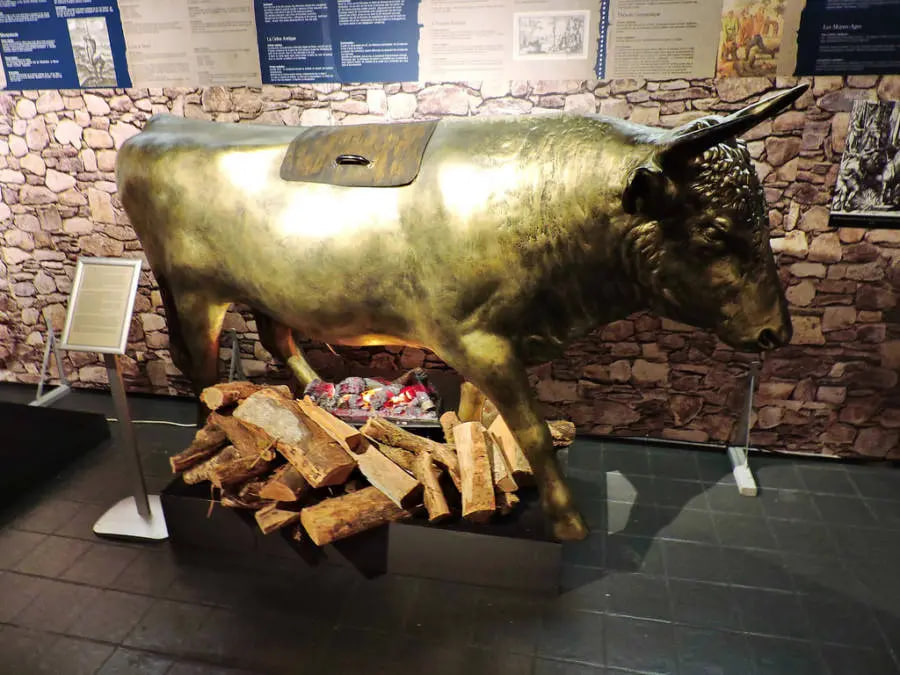
The Greek inventor, Perilaus of Athens, was the real-life version of the Jigsaw Killer from the Saw movies, and when he met Phalaris, the tyrant of the Sicilian state of Akragas, he was finally able to build the most terrifying torture device ever.
Phalaris himself had a bit of a torture fetish, and with human rights pretty much non-existent in the 6th century BC, the meeting between the two men gave birth to one of the evilest torture devices ever thought up – the brazen bull.
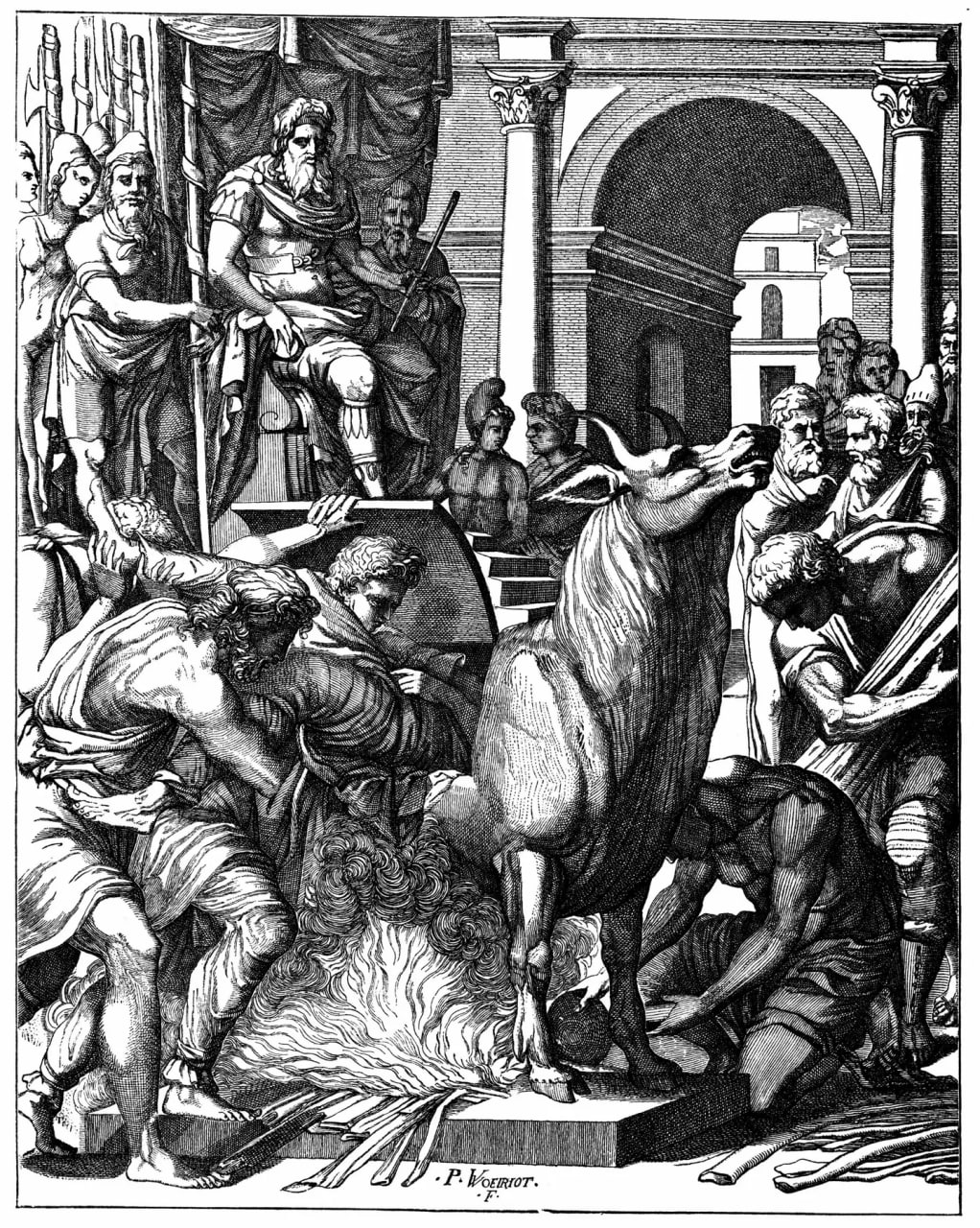
The bull of Phalaris was the size of a real bull, but hollow and made entirely out of bronze with a door on one side.
Anyone deserving of Phalaris’s scorn was locked inside the device, and a fire was set under it, heating the metal until the person inside was roasted to death. Often, victims survived for as long as 10 minutes before dying.
As if the cooking of another person wasn’t enough for the mad tyrant, the bull was designed with a system of tubes so that the prisoner’s screams were converted into sounds like the bellowing of an infuriated bull.
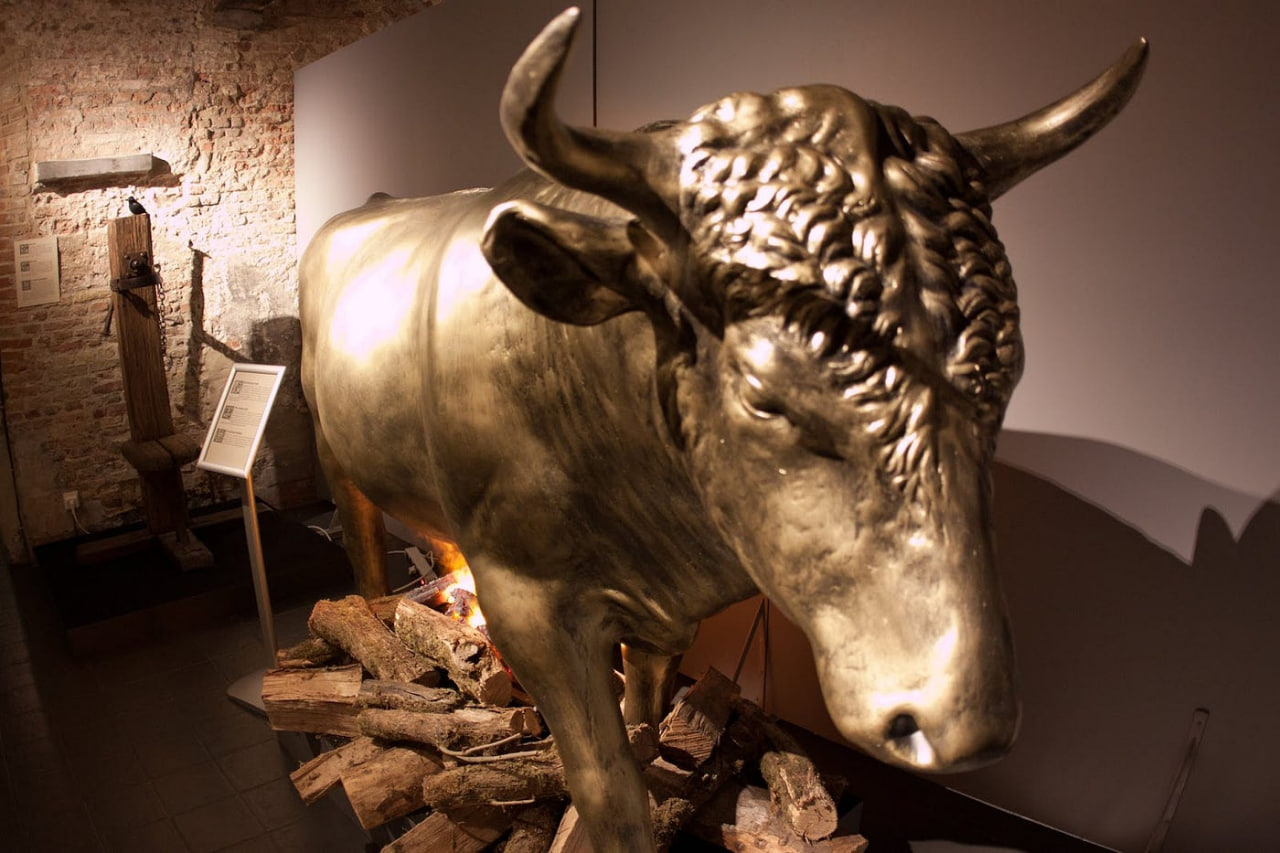
Phalaris is even said to have ordered the bull be designed in such a way so that smoke would rise in ‘spicy clouds of incense’. Yes, the tyrant of Akragas was a sicko of note.
According to legend, when the bull was reopened after a body was charred, the victim’s scorched bones then “shone like jewels and were made into bracelets.”
When Perilaus presented the brazen bull to Phalaris, the ruler insisted that the inventor climbs into the device himself to test the acoustics. However once inside the tyrant shut the door behind him and ordered a fire to be lit underneath. Naturally, Perilaus kicked up a monstrous fuss inside, which apparently satisfied the tyrant, so he released him.
He then escorted Perilaus to a nearby mountain cliff and threw him off the edge and to his death.
The bull of Phalaris was used often in the years that followed until finally Phalaris was overthrown in a general uprising by Telemachus, and in perhaps the biggest ‘karma is a b*&%#’ moment of the 6th century, the crazy tyrant was thrown into his own torture device and slowly roasted to death.
In the centuries that followed the device was widely used by the Romans, until 287 AD when Emperor Diocletian was finally cooked. Today you can see a replica of the bull in the Torture Museum in Bruges.
And if you still have the stomach for it, check out the video below to see how this nightmare device worked:


